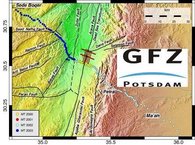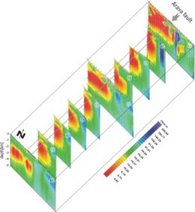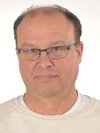Dead SEa Rift Transect / MT
It goes without saying that planet Earth is dynamic - the actual shape of the Earth s outer shell is continuously being formed and changed through processes of plate tectonics. Three key elements in the deformation and movement of these massive plates are:
- plate rifting
- plate subduction in the Earth's mantle
- horizontal transform faulting
Despite numerous investigations at different fault zones such as the San Andreas Fault Zone in California (SAF), essential processes controlling such large transforms are not yet fully understood. The Dead Sea Transform is, alongside the SAF, a key location for the study of transform faulting. The apparently simple structure of the DST system and the relatively low movement rate of approx. 0.5 cm per year distinguishes the DST significantly from the SAF which moves at a rate of 3.5 cm per year due to the complicated interaction of oceanic plate movement. Apart from the necessity for basic research, a further important reason for our study is that the investigation of historical earthquakes, paleoseismic studies and instrumental seismology over the past 100 year have shown that a number of destructive earthquakes have occurred along the DST. The DST, thus, represents a significant seismic risk for the inhabitants of Palestine, Israel and Jordan. Due to the political situation in the Middle East in recent years, an investigation of the DST has not been possible up to now. The Dead Sea Rift Transect (DESERT) project is the first geoscientific project to cross the DST (DESERT Group, 2000; 2003). This research group aims to study the structure and dynamics of the crust and the outer Earth s mantle [GFZ, 2 Jahresbericht, 2002/2003].





